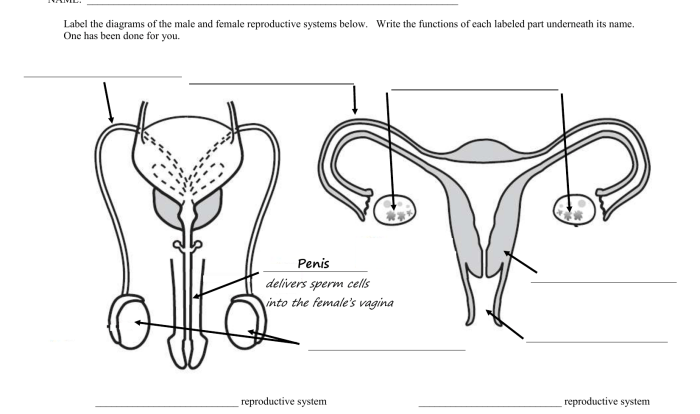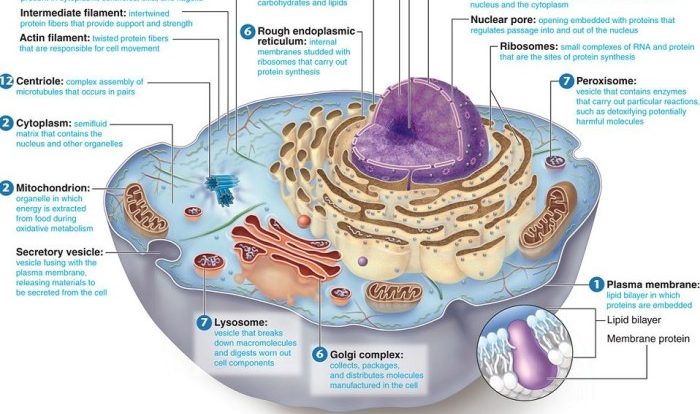Chapter 5 the integumentary system – Chapter 5: The Integumentary System embarks on a captivating exploration of the skin and its vital role in our overall health. From the intricate layers of the epidermis to the diverse functions of skin appendages, this chapter unveils the fascinating world beneath our surface.
Delving into the structure and function of the skin, we uncover the remarkable adaptations that protect, regulate temperature, and provide sensory input. We’ll delve into the fascinating realm of skin disorders, examining common ailments like acne and psoriasis, and explore the latest advancements in treatment.
Introduction: Chapter 5 The Integumentary System
The integumentary system is the body’s largest organ system. It serves as a protective barrier against the external environment, regulates body temperature, and aids in sensory perception. The skin, hair, nails, and glands make up the integumentary system.The skin, the outermost layer of the integumentary system, plays a crucial role in protecting the body from external threats such as microorganisms, chemicals, and physical damage.
It also helps regulate body temperature through sweating and shivering, and synthesizes vitamin D, essential for bone health.
Structure and Function of the Skin
The skin is a complex organ with three distinct layers: the epidermis, dermis, and hypodermis. The epidermis, the outermost layer, is composed of keratinized cells that provide a waterproof barrier. The dermis, the middle layer, contains connective tissue, blood vessels, and nerves.
The hypodermis, the innermost layer, is made up of fat cells that insulate the body and provide cushioning.Each layer of the skin has specific functions. The epidermis protects the body from external threats, while the dermis provides strength and elasticity.
The hypodermis insulates the body and stores energy. Together, these layers work to maintain the body’s homeostasis and protect it from the external environment.
Skin Layers
The integumentary system’s primary component, the skin, is a multifaceted organ composed of three distinct layers: the epidermis, dermis, and hypodermis. Each layer plays a crucial role in safeguarding and maintaining the body’s internal environment.
Epidermis
The epidermis, the outermost layer, acts as a protective barrier against external threats. It consists of stratified squamous epithelium, meaning it is composed of multiple layers of flattened cells. The outermost layer of the epidermis, known as the stratum corneum, is composed of dead cells filled with a tough protein called keratin.
This layer is crucial for preventing water loss and protecting the body from physical and chemical damage.
Dermis
Beneath the epidermis lies the dermis, a thicker and more resilient layer composed of connective tissue. The dermis provides strength and elasticity to the skin and contains various structures, including blood vessels, hair follicles, sweat glands, and nerve endings. The blood vessels in the dermis nourish the epidermis and regulate body temperature, while the hair follicles produce hair shafts that provide insulation and protection.
Sweat glands secrete sweat, which aids in temperature regulation and waste elimination. Nerve endings in the dermis allow us to sense touch, pressure, and temperature changes.
Hypodermis
The hypodermis, also known as the subcutaneous layer, is the innermost layer of the skin. It is composed of adipose tissue (fat cells) and connective tissue. The hypodermis provides insulation, cushioning, and energy storage. It also serves as a passageway for blood vessels and nerves that supply the overlying layers of the skin.
Skin Appendages
The integumentary system not only serves as a protective barrier but also houses a variety of appendages that perform diverse functions. These appendages include hair follicles, nails, and sweat glands, each contributing to the overall health and appearance of the skin.
Hair Follicles, Chapter 5 the integumentary system
Hair follicles are tiny, tube-shaped structures that house the hair shaft. Each follicle consists of an outer root sheath and an inner root sheath that surrounds the hair shaft. The hair shaft is composed of keratinized cells that are produced by the hair follicle’s matrix cells.
Hair follicles play a crucial role in thermoregulation, providing insulation against heat loss, and can also contribute to sensory perception through the presence of nerve endings.
Nails
Nails are hard, protective plates that cover the tips of fingers and toes. They are composed of a protein called keratin and are produced by the nail matrix, which lies at the base of the nail. Nails protect the underlying tissues from injury and aid in gripping and manipulating objects.
They also grow continuously throughout life, requiring regular trimming to maintain a healthy length.
Sweat Glands
Sweat glands are exocrine glands that secrete sweat onto the skin’s surface. There are two main types of sweat glands: eccrine and apocrine. Eccrine sweat glands are distributed throughout the body and produce a watery sweat that helps regulate body temperature through evaporation.
Apocrine sweat glands are found in specific areas, such as the armpits and groin, and produce a thicker, milky sweat that contains proteins and lipids.
Skin Functions
The integumentary system, primarily composed of the skin, serves multifaceted roles that are essential for the overall well-being of an organism. Its functions extend beyond physical protection, encompassing thermoregulation and sensory perception, collectively contributing to the survival and adaptability of living beings.
Protective Functions
The skin acts as a formidable barrier, safeguarding the body from external threats and maintaining internal homeostasis. It provides a physical barrier against pathogens, such as bacteria and viruses, preventing their entry into the body. Additionally, the skin’s tough outer layer, composed of dead cells, offers protection from abrasion, impact, and excessive moisture loss, preserving the delicate underlying tissues.
Thermoregulatory Functions
The skin plays a crucial role in regulating body temperature, enabling organisms to adapt to fluctuating environmental conditions. When the body needs to cool down, blood vessels near the skin’s surface dilate, increasing blood flow and allowing heat to escape through the skin’s surface.
Conversely, when the body needs to conserve heat, blood vessels constrict, reducing blood flow to the skin and minimizing heat loss.
Sensory Functions
The skin is endowed with an intricate network of sensory receptors that enable us to perceive and respond to our surroundings. These receptors detect a wide range of stimuli, including touch, pressure, temperature, and pain. This sensory information is relayed to the brain, providing us with essential feedback about our environment and enabling us to interact with it appropriately.
Skin Disorders
The skin is the largest organ of the human body, and it is responsible for a variety of functions, including protection, sensation, and thermoregulation. When the skin is damaged or diseased, it can lead to a variety of skin disorders.
Common Skin Disorders
Some of the most common skin disorders include:
- Acne
- Eczema
- Psoriasis
- Rosacea
- Skin cancer
Acne
Acne is a common skin disorder that affects people of all ages. It is caused by a combination of factors, including genetics, hormones, and bacteria. Acne can cause a variety of symptoms, including blackheads, whiteheads, pimples, and cysts.
There are a variety of treatment options for acne, including topical medications, oral medications, and laser therapy. The best treatment option for acne will depend on the severity of the condition.
Psoriasis
Psoriasis is a chronic skin disorder that causes red, scaly patches of skin. It is caused by an overactive immune system. Psoriasis can affect any part of the body, but it most commonly affects the elbows, knees, and scalp.
There are a variety of treatment options for psoriasis, including topical medications, oral medications, and light therapy. The best treatment option for psoriasis will depend on the severity of the condition.
Skin Care
Maintaining healthy skin is essential for overall well-being. The skin, being the largest organ of the human body, serves as a protective barrier against external factors and plays a crucial role in regulating body temperature, sensation, and vitamin D synthesis.
Proper skin care practices can help preserve the skin’s health, prevent damage, and enhance its appearance.
Protecting the Skin from Sun Damage
Exposure to ultraviolet (UV) radiation from the sun is one of the primary causes of skin damage. UV radiation can penetrate the skin’s layers, leading to sunburn, premature aging, and an increased risk of skin cancer. To protect the skin from sun damage, it is essential to:
- Limit sun exposure, especially during peak hours (10 am to 4 pm).
- Wear protective clothing, including long sleeves, pants, and a wide-brimmed hat.
- Apply sunscreen with a broad-spectrum SPF of 30 or higher to all exposed skin areas, even on cloudy days.
- Reapply sunscreen every two hours, or more often if swimming or sweating.
Moisturizing the Skin
Moisturizing the skin helps maintain its hydration and prevents dryness. Dry skin can become irritated, itchy, and prone to wrinkles. Regular use of a moisturizer can:
- Hydrate the skin and improve its texture.
- Protect the skin from environmental factors.
- Reduce the appearance of fine lines and wrinkles.
- Soothe irritated skin.
When choosing a moisturizer, consider your skin type and any specific skin concerns you may have. For example, if you have dry skin, look for a moisturizer with humectants, such as hyaluronic acid or glycerin, which help attract and retain moisture.
If you have oily skin, choose a moisturizer that is oil-free and non-comedogenic, meaning it will not clog pores.
FAQ Insights
What are the layers of the skin?
The skin is composed of three layers: the epidermis, dermis, and hypodermis.
What is the function of hair follicles?
Hair follicles produce hair, which helps protect the body from the elements and provides insulation.
What are the common causes of acne?
Acne is caused by a combination of factors, including hormonal changes, bacteria, and clogged pores.

